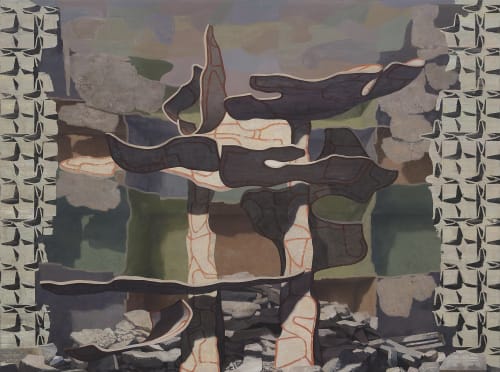(Cherry and Martin archive - Cherry and Martin is now Philip Martin Gallery.)
Long before laptops and long, long before "Photoshop" began to be used as a verb, artists manipulated images the old-fashioned way – by cutting and pasting parts of pictures in fantastic collages that made the impossible look almost realistic.
At Cherry and Martin, Daniel Dove takes visitors back to those days without leaving the present behind. His eight haunting paintings fuse the sleek, seamless beauty of digital imagery with the turbulent disjointedness of collage, forming an uneasy alliance laced with anxiety and fueled by weird beauty.
All of Dove's paintings are realistically rendered, painted with the care and devotion an acolyte might lavish on a cherished talisman. All zero in on tightly cropped scenes, eliminating the environs and suggesting that we are witnessing the aftermath of a disaster through a periscope or protective peephole.
The things Dove depicts are ambiguous, liquid, mirage-like. "Exploded View" and "Heat Wave" feature partially disassembled Hummers suspended among homemade jungle gyms. "Desert Playscape" and "Precita Playscape" resemble oversize habitrails designed for Jean Paul Sartre's "No Exit."
Dove's three largest paintings, "Soundstage," " ‘69 AMX" and "Odeon" dial the mix-and-match madness up to a feverish pitch. Combining loads of everyday imagery – airplanes, billboards, cityscapes, theaters and parks – with stylistic flourishes that recall signature works by Joe Andoe, Adam Ross, Philip Taaffe, David Schnell, Scott Anderson and Dimitri Kozyrev, Dove's hallucinatory paintings make the world look like a kaleidoscopic collage that is just beyond reach – turning too fast to grab onto but too tantalizing to turn away from.

